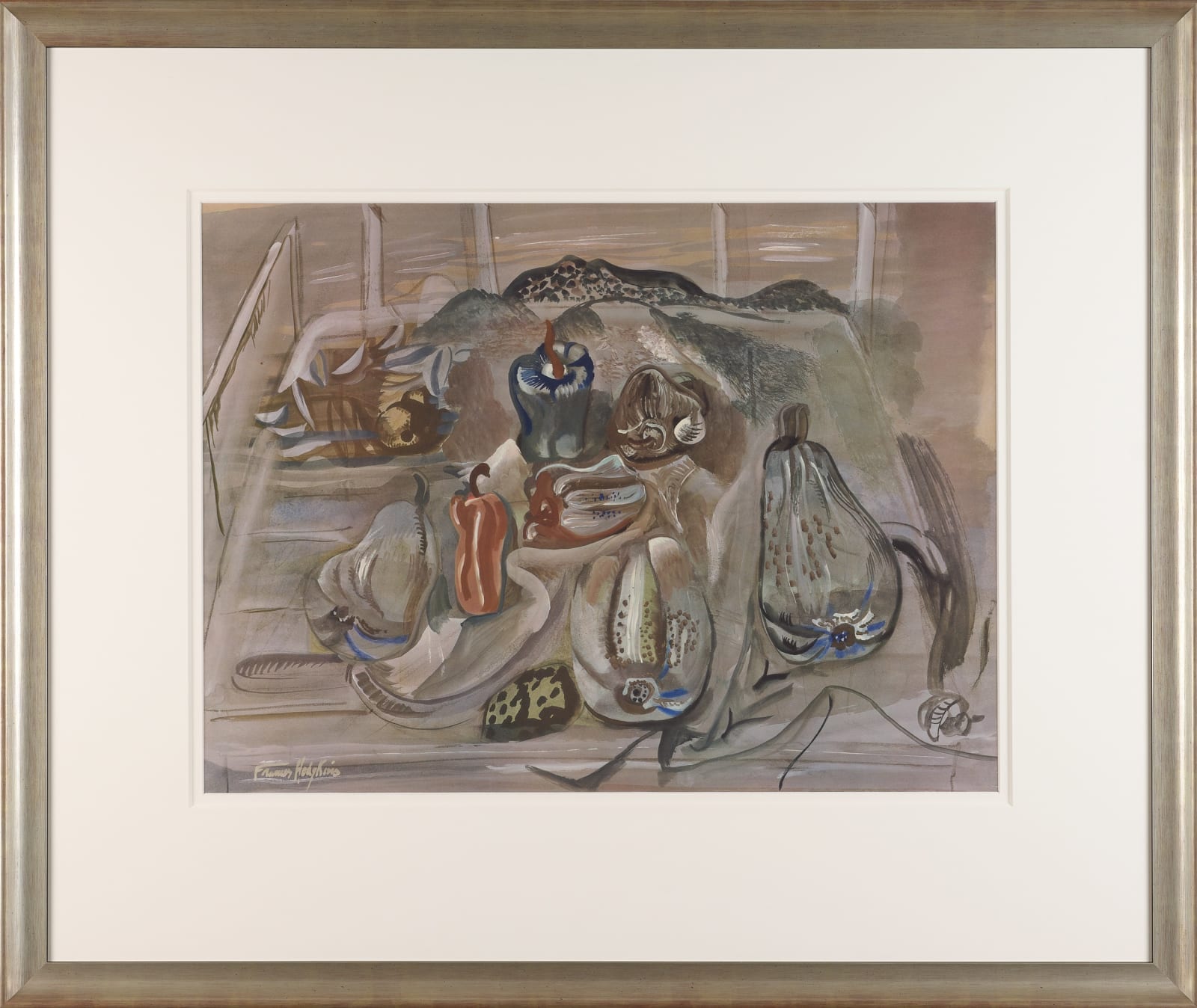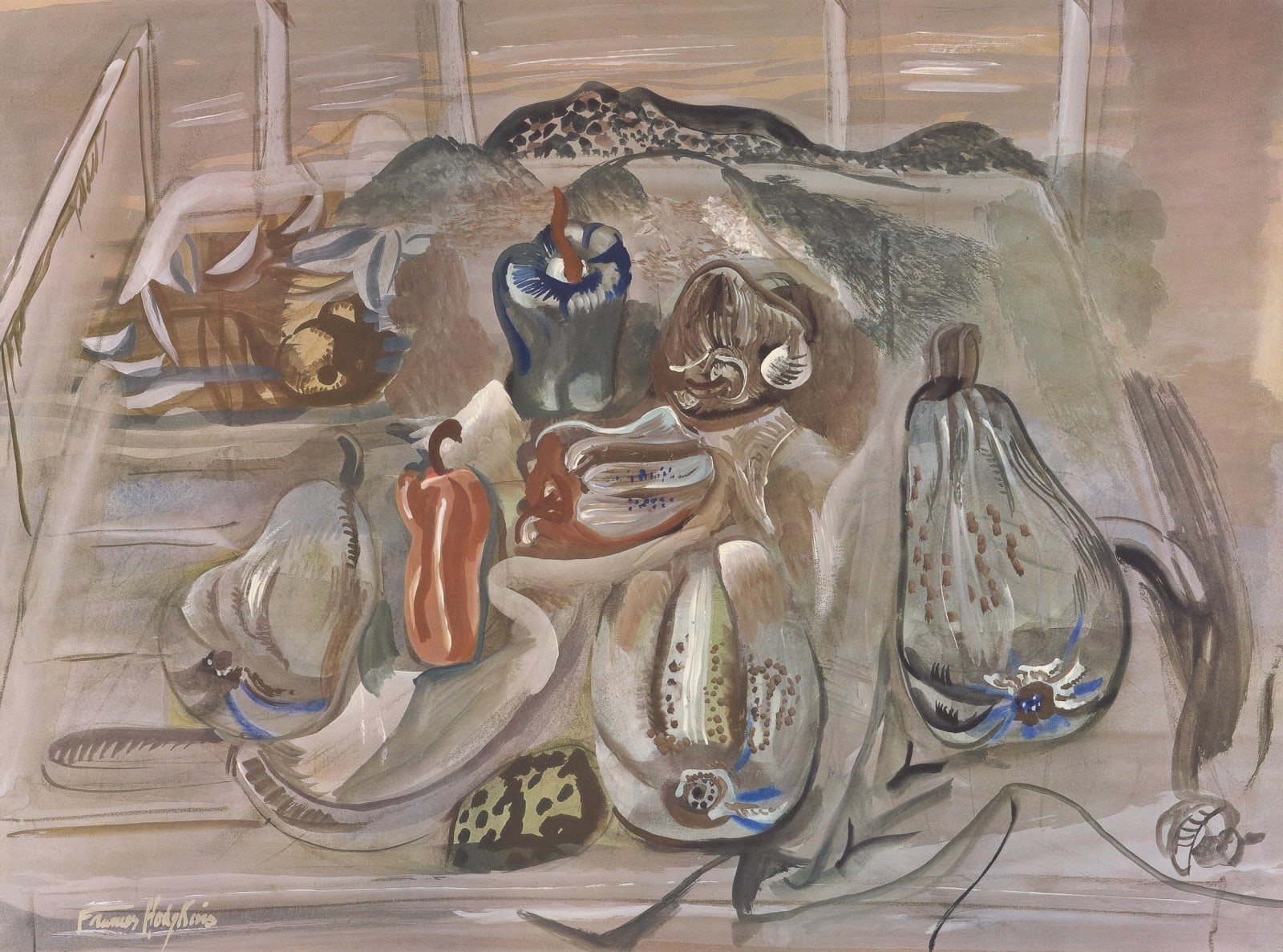Frances Mary Hodgkins New Zealand, 1869-1947
Illustrated Ganymed Facsimiles, London, April 1950. p.18
The image used to produce the present original collotype “Pumpkins” is that of the gouache Pumpkins and Pimenti (circa 1935) owned at the time by Sir Kenneth Clark, Director of the National Gallery, and now held in the collection of The Fletcher Trust.
With financial assistance from Rée Gorer and Dorothy Selby, Frances Hodgkins spent the winter of 1935 – 36 in Tossa de Mar where she painted the gouache Pumpkins and Pimenti which is closely related to Marrows a work that featured in the 2019 Jonathan Grant Galleries exhibition Frances Hodgkins – A New Zealand Modernist.
Frances Hodgkins wrote to Dorothy Selby. Casa Steyer Tossa de Mar Spain Nov 1935
I paint during the morning – dividing my time inside & outside the Studio. This is the very charming part of a place like Tossa. So small & simple one can step into the old streets and have a look round – make a quick sketch & back to the Studio. Repeating this little stunt perhaps 2-3 times during the morning – no fatigue – no complications.
I am mildly happy here as regards work. Subjects have come slowly. I still think it rather a middling sort of place ideal in summer – for a good time & holiday[1]
In the present work, the pencil under-drawing is clearly visible and the addition of chalk and small areas of bright colour over the gouache add lustre and definition to the image.
By the time she made this picture, still life had become one of Hodgkins’ favourite types of composition, and this is one of her most distinguished in that genre. The use of vegetables as a substitute for flowers and ceramic vases is reminiscent of her ‘still life in a landscape’ series of paintings although the colour tones are more muted and the landscape is less defined in the present work which allows the blues on the central pepper and the red of the foreground pepper to stand out in the composition giving a feeling of that of an earlier work by Georges Braque.
Pumpkins and Pimenti was purchased by Sir Kenneth Clark, at that time a leading light in the British art establishment, and selected for the Penguin monograph on Hodgkins that Myfanwy Evans submitted for the artist’s approval before publication (Frances Hodgkins, 1948), indicates the esteem that the artist herself and her contemporaries put on this work.
This standing is endorsed by the work’s inclusion in the project that gave it the form seen here: these Ganymed Facsimiles reproduced original artworks in colour collotype of a sufficient quality “for display in Art Galleries, Museums, Universities, etc., throughout the world”. The company provided specially designed frames to enhance the works’ artistic effect, and the Tate Gallery was happy to put its name to them. Hodgkins was included in the second list offered, whose thirty-one artists ran from William Blake to Pablo Picasso.




